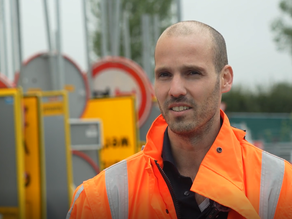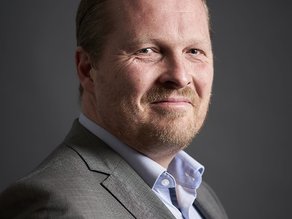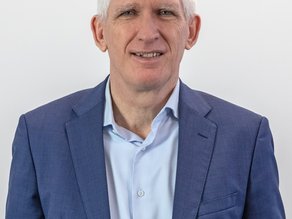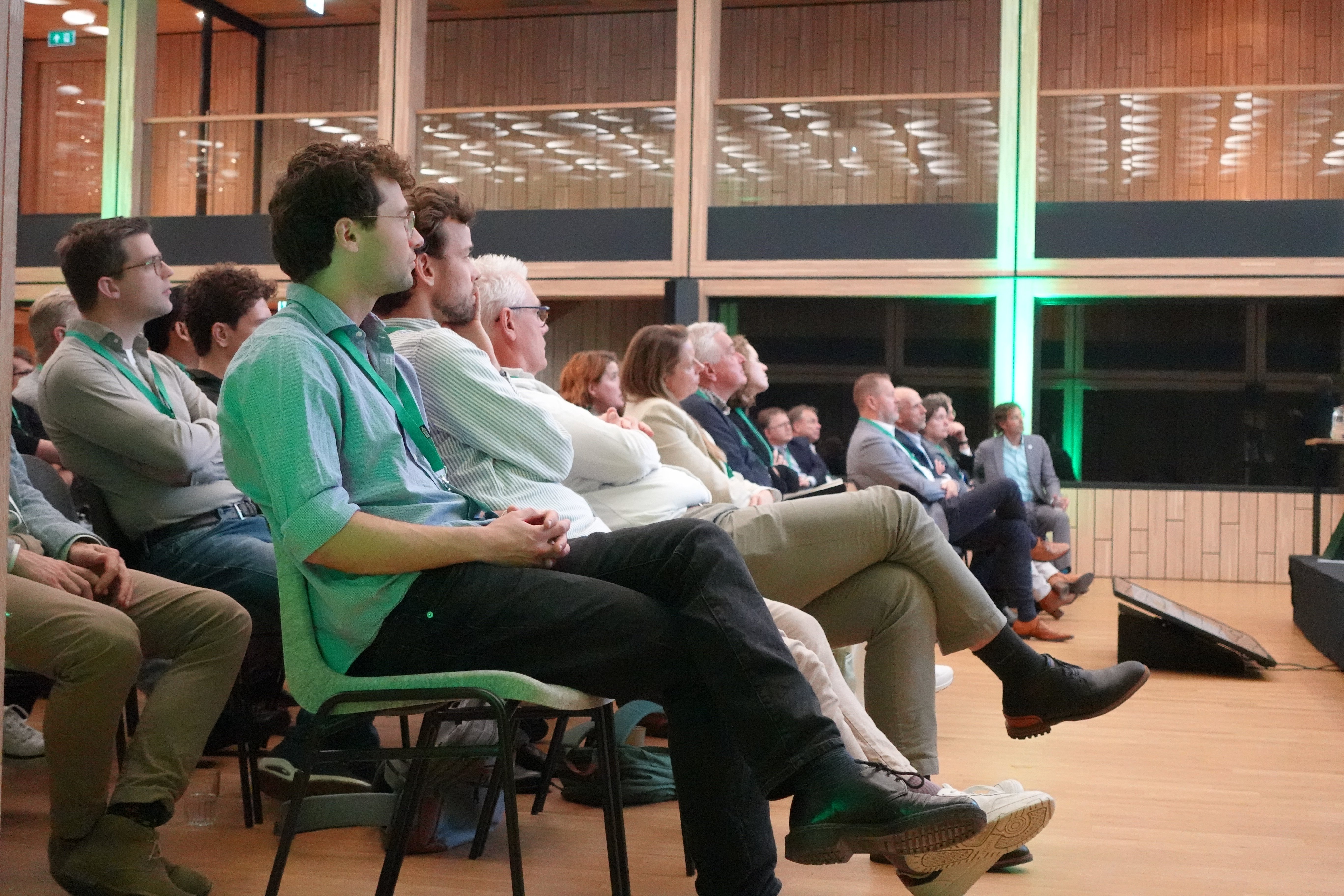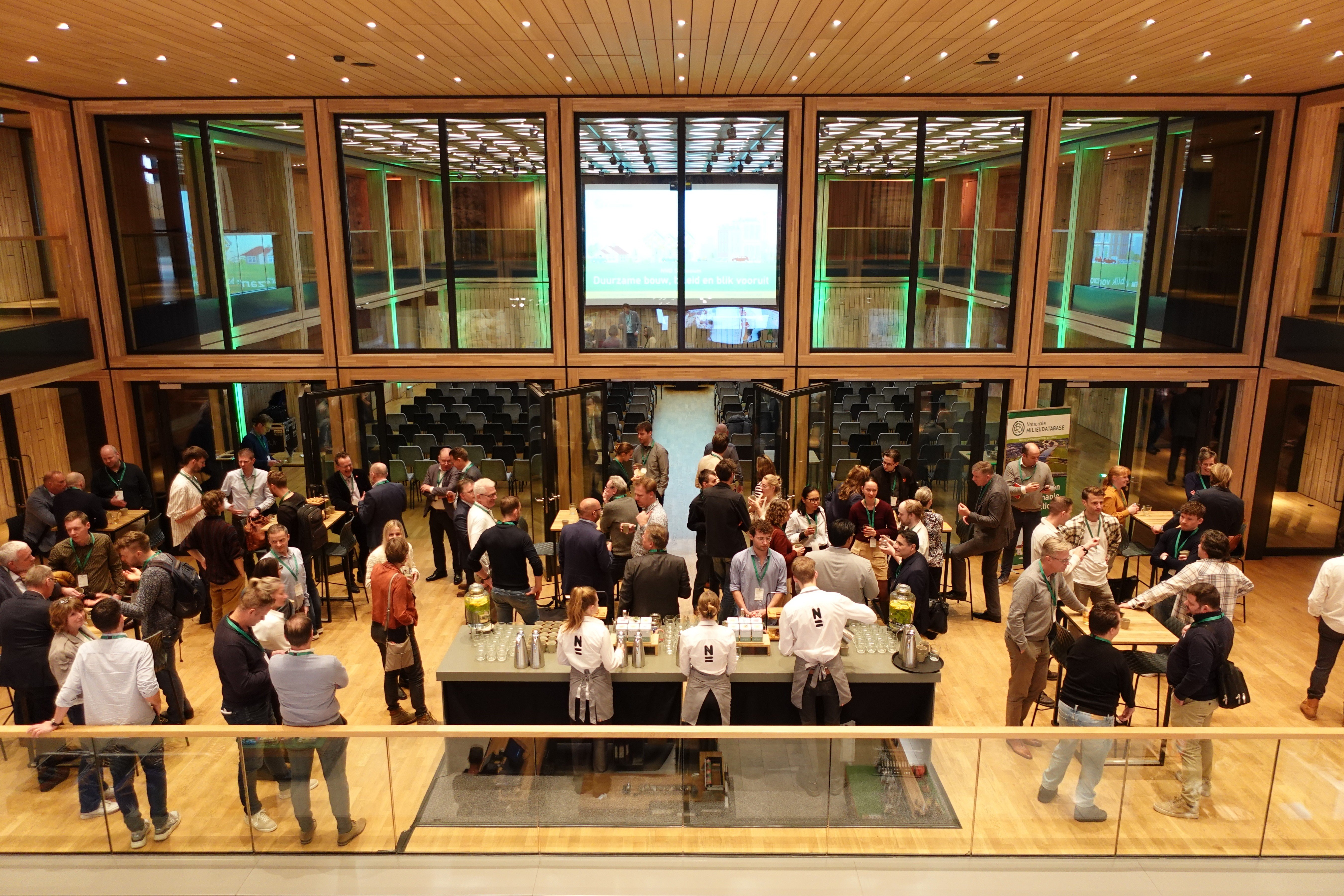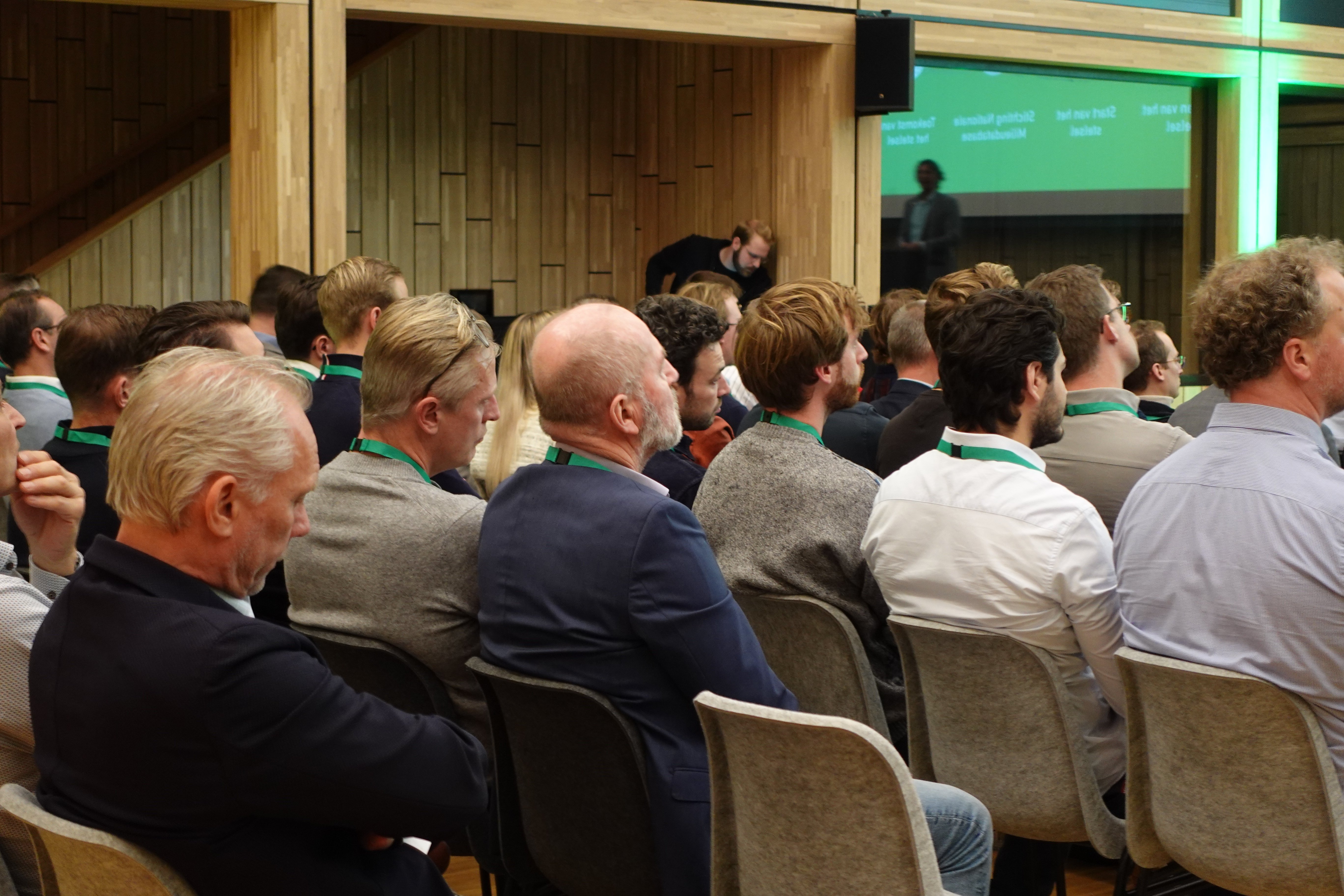Report of the NMD Symposium 2025:
Sustainable construction, policy and the road ahead
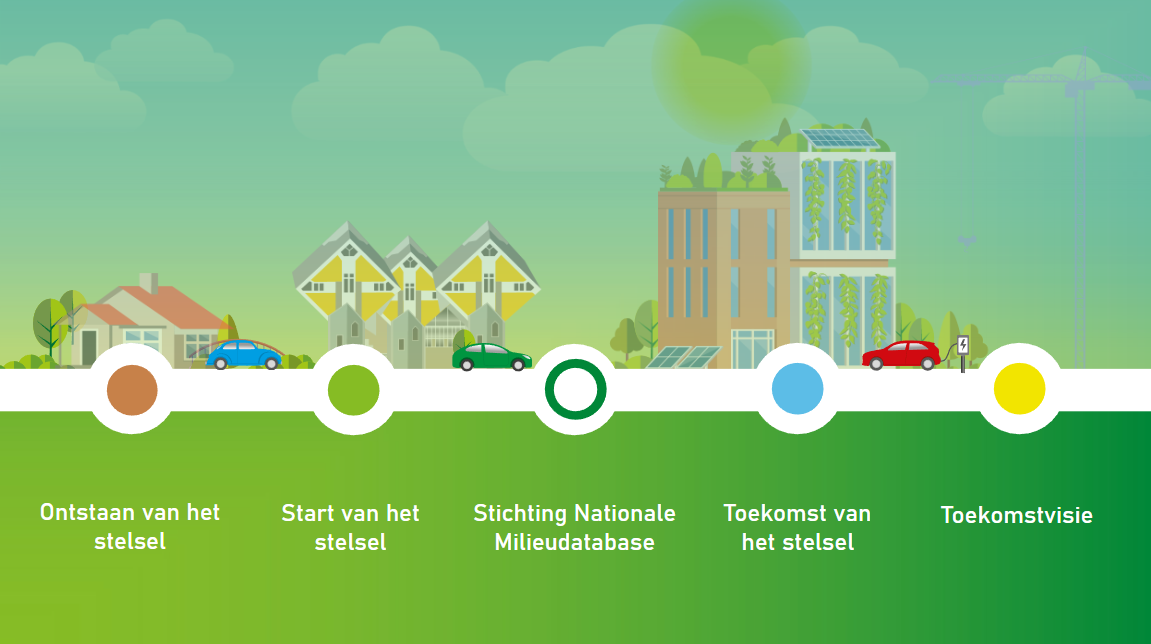
The annual NMD Symposium brought a full audience together this year at Naturalis. A group of designers, policymakers, LCA experts, manufacturers and consultants. People from different parts of the construction sector, yet all with the same question: where does the environmental performance system stand today, and where is it heading?
The afternoon was structured along a timeline: from the origins of the system, through the current state of affairs, towards the future. This timeline formed the backbone of the programme.
Under the guidance of moderator Maarten Schäffner, the audience was given a broad and clear picture of the environmental performance system: what is going well, where the points of attention lie and which developments are coming our way.
Maarten opened the afternoon by expressing what many in the room already felt: we are in the midst of a period in which the environmental performance system is changing rapidly. This calls for clarity, reflection and space to meet each other outside the rush of deadlines and policy developments.
For that reason, this symposium did not follow a series of separate presentations, but instead followed a timeline: from pioneering to European integration — a journey from 1960 to 2050.
1960–2010 – Origins of the system
Live: Jeannette Levels (LBP|SIGHT)
The retrospective began with a conversation between Maarten and Jeannette Levels about how the system emerged more out of necessity than ambition.
Jeannette sketched the early roots of environmental thinking in the construction sector: studies on environmental impact from the 1960s and 1970s, comparisons between materials, the first functional units. These were individual puzzle pieces, but not yet a system.
Jeannette explained how the Netherlands gradually developed towards a shared language for environmental data. “Everyone calculated differently,” she said. “Sometimes based on assumptions, sometimes with unknown sources. Only when the need for fair comparison grew did the call for structure emerge.”
Video: contribution by David Anink (W/E Adviseurs)
Through a video contribution, David Anink described how different parties worked together to bring together the various elements of the methodology.
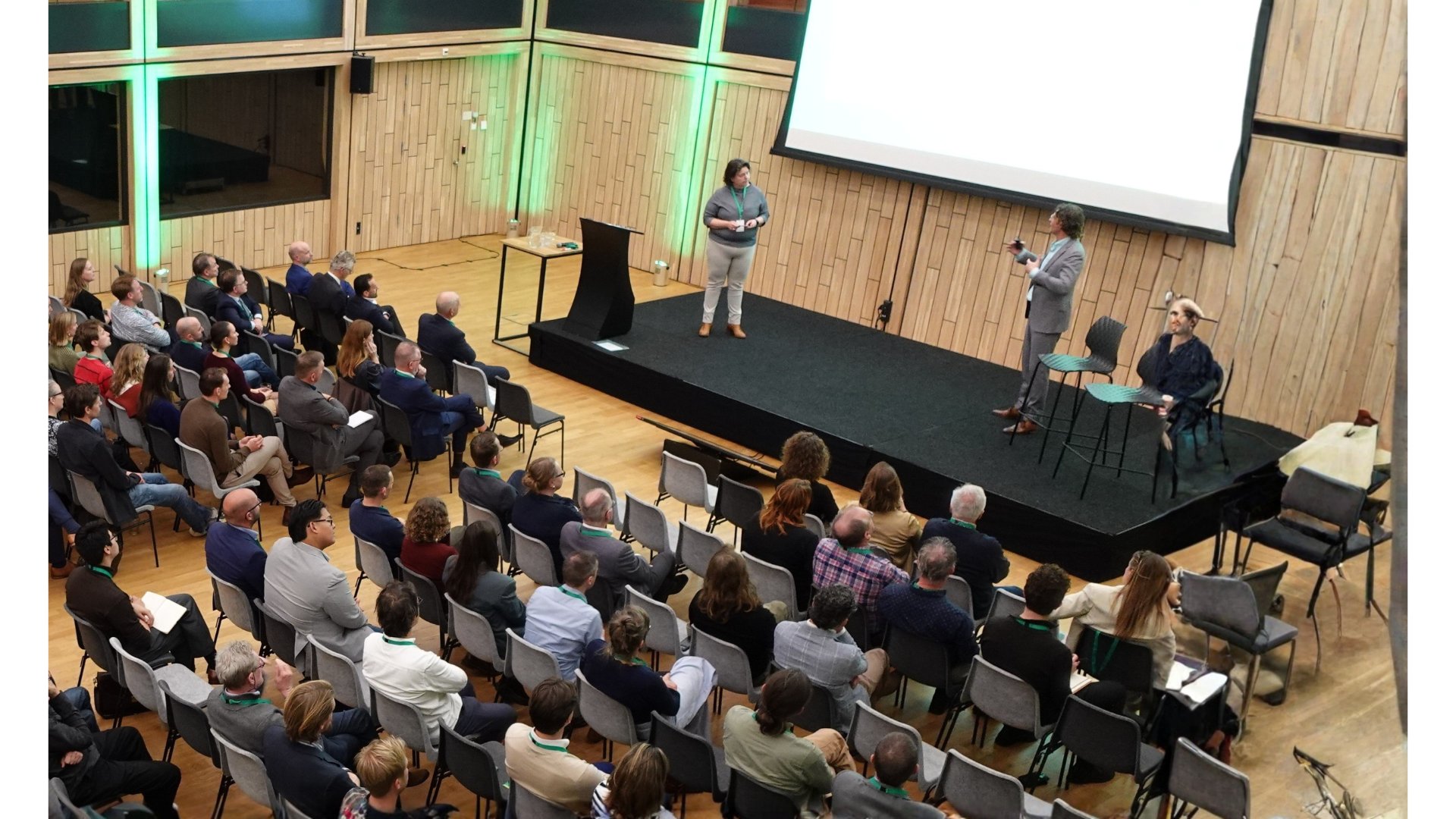
2011–2020 — Start of the system
Video: Harry Nieman (Former Director of Stichting NMD)
In his video contribution, Harry Nieman described the foundation that was laid during these years: the methodology, agreements and independent review. This development has made the system mature enough today to take the step towards the European level.
2020–2025 — Where Stichting NMD and the system stand today
2020 – Establishment of the independent Stichting NMD
To begin, Jan-Willem Groot offered a brief reflection in which he highlighted the milestones achieved and the growth of Stichting NMD and the system. He spoke about expanding the environmental performance system, increasing the number of calculation tools from four to nine, and improving usability through software development such as the viewer. A major achievement was recently surpassing 5,000 environmental declarations in the database. Jan-Willem also noted the growth in the number of recognised LCA reviewers: where there were 15 five years ago, there are now 40.
Video: David Anink (W/E Adviseurs) on the future
David Anink explained that although the sector has made significant progress, both the data and its usability can still be improved. He also pointed out that many parties in the sector are highly motivated to advance sustainability and encouraged efforts to support and facilitate this motivation.
The remainder of this section was delivered by various experts from Stichting NMD. Here, the timeline became concrete: no longer a historical overview, but the daily practice of data quality, updates and knowledge sharing.
White Spots & filling the database
Live: John Drissen and Marcel Bregman (Stichting NMD)
John and Marcel discussed the product groups in the database that are still insufficiently represented with category 1 data, and the steps taken in recent years to fill these gaps. Through close collaboration with sectors and industry associations, the database is growing faster and in a more targeted way.
Data quality
Live: Nicoline Opbroek (Stichting NMD)
Nicoline demonstrated how the quality of the data is being improved. In many places, category 3 data has been updated, because accuracy and reliability are essential to keeping environmental performance genuinely usable.
NMD Academy
Live: Lotte Verheul (Stichting NMD)
Lotte presented the renewed NMD Academy. Three modules — Environmental Performance, Environmental Data and Databases — support students, teachers, construction professionals and LCA practitioners in understanding and applying the system.
Renovation & transformation of the existing building stock
Live: Pieter Lieffering (Stichting NMD)
Pieter showed how environmental performance is increasingly focusing on the existing building stock. The methodology works differently here than for new construction. The sector is at the beginning of this development, and the system is evolving accordingly. For both the buildings and civil engineering sectors, work is under way. In the buildings sector, the focus is on renovation, transformation and maintenance.
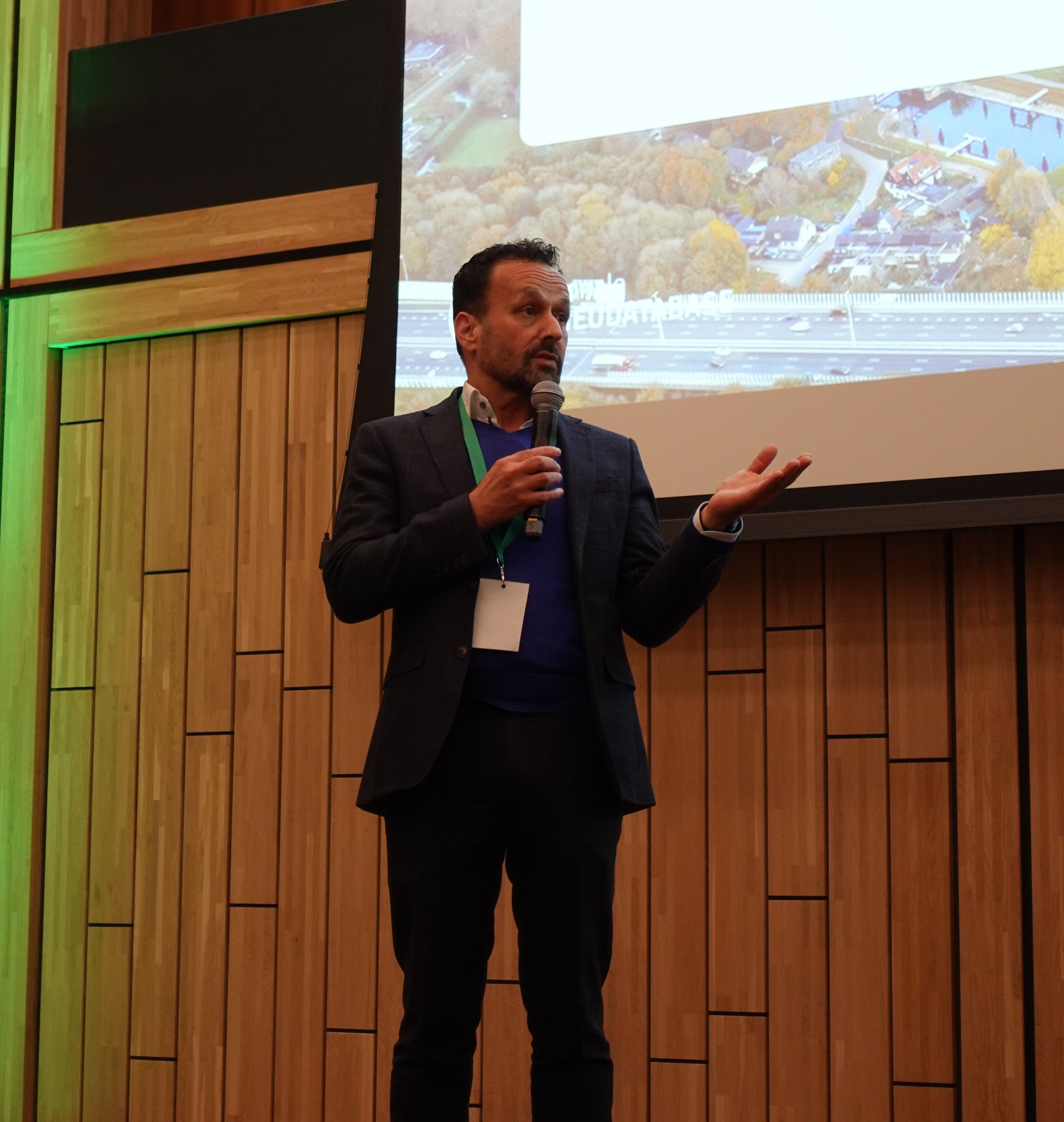
2025–2030 — Future of the system
Outlook towards 2030 — Mandatory environmental requirements in civil engineering, European developments such as CPR and WLC-GWP, and information on DigiDeals from digiGO
Mandatory environmental requirements in the civil engineering sector
Video: Charlie de Jong (Ministry of Infrastructure and Water Management)
At the NMD Symposium 2024, Charlie explained the MKI (Environmental Cost Indicator) and the legislative proposal to make the MKI more mandatory in the civil engineering sector. Research has shown that the obligations in this proposal could lead to a reduction of 1 megaton of CO2. Charlie provided an update on the status of the proposal.
European developments (in outline)
Live: Dirk Breedveld (Ministry of Housing and Spatial Planning)
Dirk outlined the developments related to CPR, EPBD and WLC-GWP and referred to his presentation for further details.
Information about DigiDeals from digiGO
Live: Martijn Heijstek (digiGO)
Martijn Heijstek explained the activities and objectives of digiGO. He outlined which projects and DigiDeals are currently under way and provided insight into the first results. Martijn also emphasised that digiGO aims to encourage as many parties as possible to contribute to improving digital collaboration. He concluded with a call to action, inviting the audience to join the collaboration and explaining what organisations can do to make this possible.
Video: Sjoerd Keetels (Heijmans)
In his video contribution, Sjoerd Keetels explained that builders increasingly need relief in obtaining environmental data. He described how streamlining the process allows builders to carry out analyses more quickly. This not only makes it easier for them to realise their projects, but also raises awareness of environmental impact.
Live: André Meester (Stichting NMD)
André Meester discussed what digiGO has done so far to support the market in working with environmental data. He also provided context and clarification regarding the connection between digiGO and Stichting NMD. After briefly explaining what a DigiDeal entails, he noted that four DigiDeals have been signed this year. He then described each of these DigiDeals in detail and concluded with an extensive Q&A session.
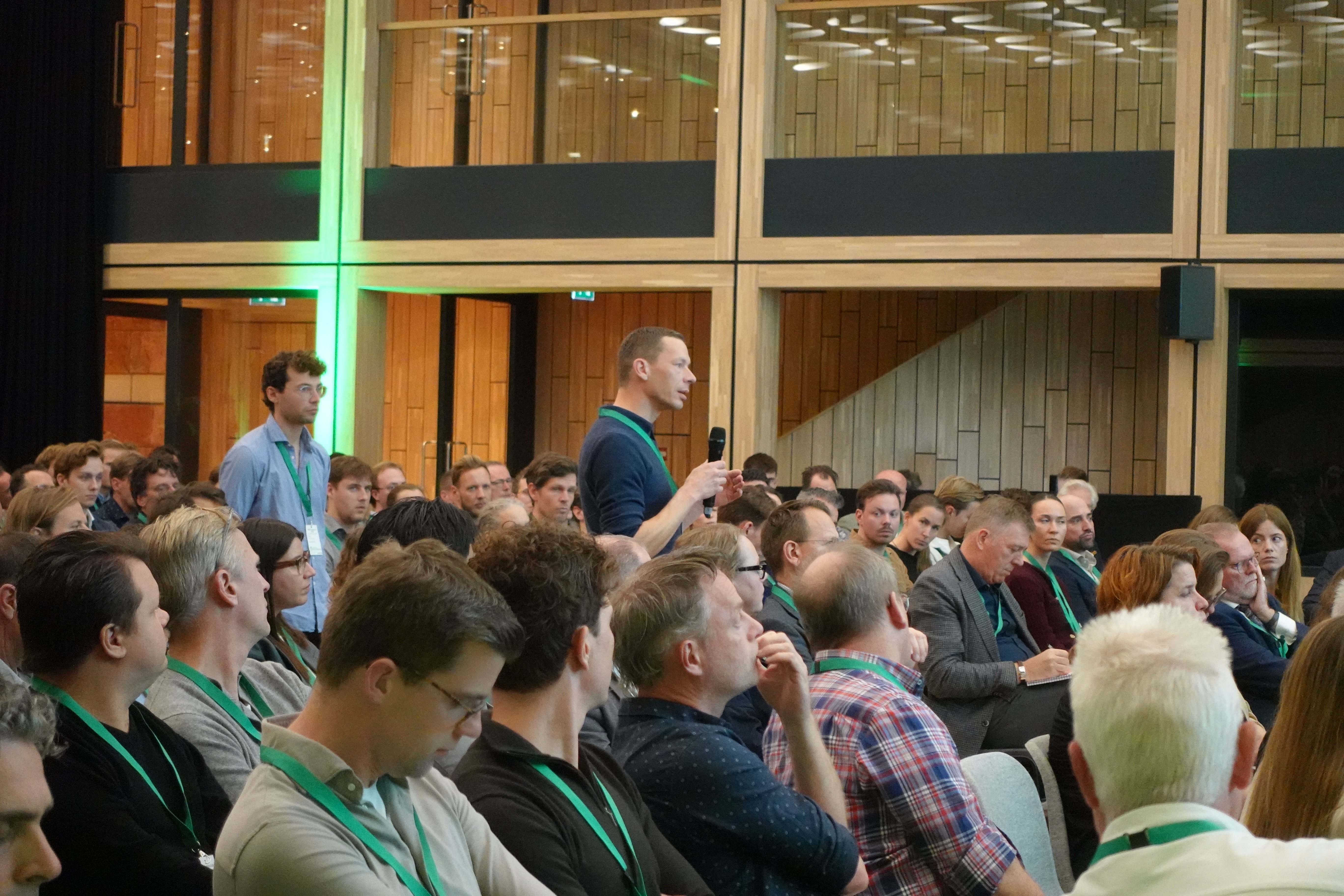
After 2030, 2040, 2050 — Future vision
Live: Jeannette Levels, Dirk Breedveld, Jan-Willem Groot
The closing segment offered three personal perspectives on what environmental performance might look like in 2050.
Jeannette Levels
By 2050, the market will calculate not out of obligation, but out of conviction. Environmental performance will have become a design value.
Dirk Breedveld
Europe will then be working with a unified environmental language. Data will flow more easily, and impact will be comparable.
Jan-Willem Groot
By then, the system will be an open, transparent and reliable network in which government, market and knowledge institutions can collaborate effectively.
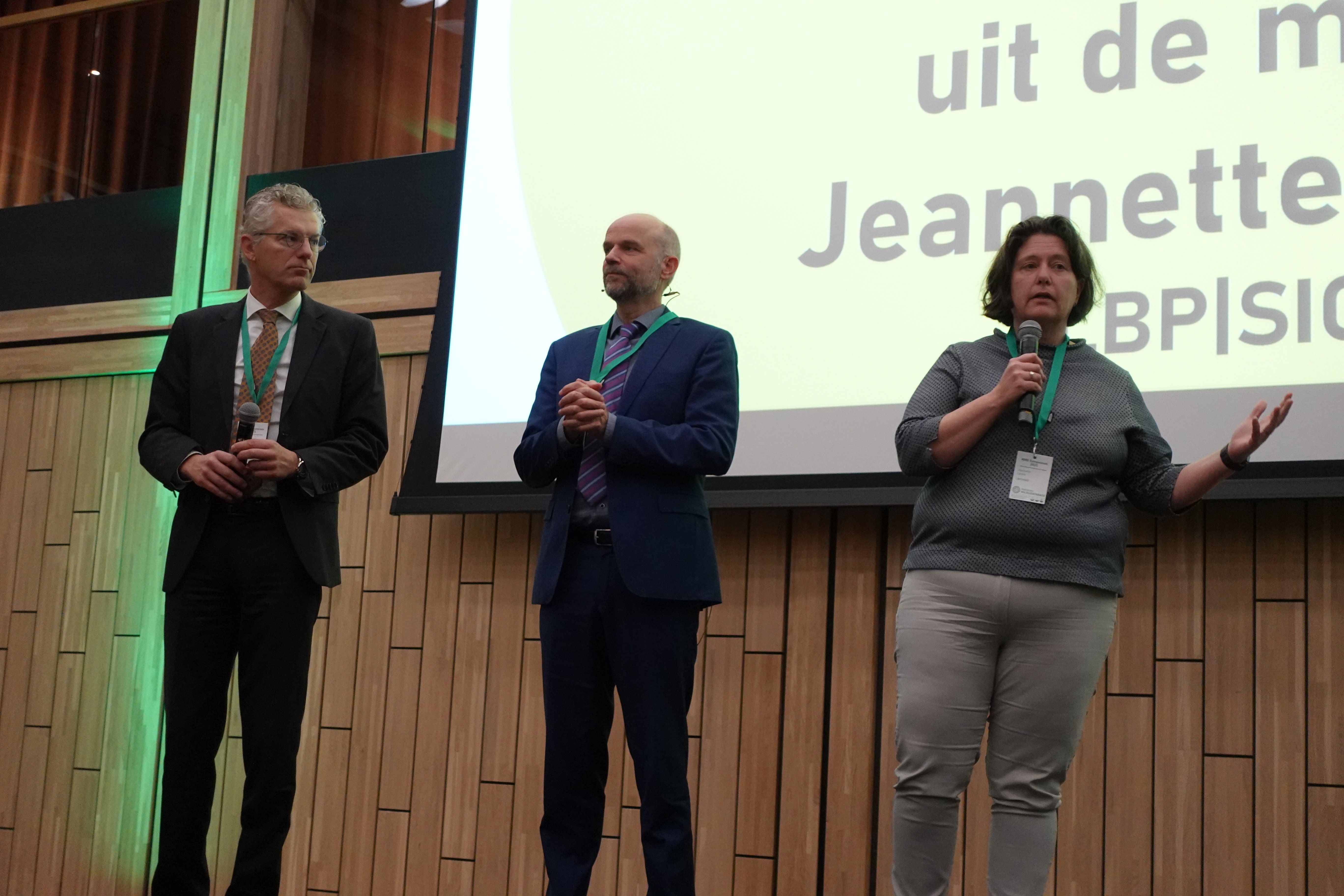
Closing
Jan-Willem concluded the afternoon by noting that the environmental performance system will never be “finished”. It evolves in line with policy, the sector and technology — and this evolution can only succeed when parties work together.
During the closing reception, the conversation continued: about data, policy, design and, above all, about the role that Stichting NMD plays in the transition towards 2030 and 2050.
Read all interviews:
